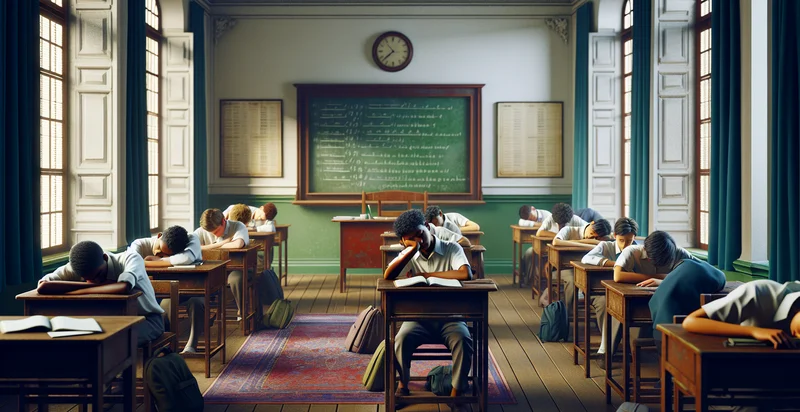Identify whether student is sitting
using AI
Below is a free classifier to identify whether student is sitting. Just upload your image, and our AI will predict if the student is sitting - in just seconds.

Contact us for API access
Or, use Nyckel to build highly-accurate custom classifiers in just minutes. No PhD required.
Get started
import nyckel
credentials = nyckel.Credentials("YOUR_CLIENT_ID", "YOUR_CLIENT_SECRET")
nyckel.invoke("whether-student-is-sitting-identifier", "your_image_url", credentials)
fetch('https://www.nyckel.com/v1/functions/whether-student-is-sitting-identifier/invoke', {
method: 'POST',
headers: {
'Authorization': 'Bearer ' + 'YOUR_BEARER_TOKEN',
'Content-Type': 'application/json',
},
body: JSON.stringify(
{"data": "your_image_url"}
)
})
.then(response => response.json())
.then(data => console.log(data));
curl -X POST \
-H "Content-Type: application/json" \
-H "Authorization: Bearer YOUR_BEARER_TOKEN" \
-d '{"data": "your_image_url"}' \
https://www.nyckel.com/v1/functions/whether-student-is-sitting-identifier/invoke
How this classifier works
To start, upload your image. Our AI tool will then predict if the student is sitting.
This pretrained image model uses a Nyckel-created dataset and has 2 labels, including Sitting and Not Sitting.
We'll also show a confidence score (the higher the number, the more confident the AI model is around if the student is sitting).
Whether you're just curious or building whether student is sitting detection into your application, we hope our classifier proves helpful.
Related Classifiers
Need to identify whether student is sitting at scale?
Get API or Zapier access to this classifier for free. It's perfect for:
- Classroom Engagement Monitoring: This use case involves using the identifier to assess the level of student engagement in real-time during lectures. By recognizing whether students are sitting, educators can gauge participation and adapt teaching methods accordingly to maintain attention and interest.
- Attendance Automation: Schools can implement this functionality within their attendance systems to streamline the check-in process. By identifying whether students are sitting at their desks, the system can automatically register attendance, reducing administrative workload and increasing accuracy.
- Behavior Analysis in Learning Environments: Educators can utilize this technology to analyze student behavior by monitoring sitting patterns over time. The data can uncover trends related to engagement, restlessness, or distractions to inform interventions aimed at improving learning outcomes.
- Emergency Response Systems: In the event of an emergency, this identifier can quickly help determine whether students are seated and in a safe position. This information could be crucial for first responders and school officials to execute timely and appropriate safety measures.
- Remote Learning Optimization: For distance learning environments, the identifier can facilitate monitoring of student attention during virtual classes. By recognizing whether participants are seated and attentive, instructors can modify their engagement strategies and content delivery methods to enhance learning effectiveness.
- Classroom Environment Assessment: School administrators can leverage this binary classification to evaluate classroom effectiveness. By analyzing the proportion of students who are seated, they can assess whether classroom layouts or teaching styles need adjustments to create a more conducive learning environment.
- Fitness and Health Monitoring: In physical education settings, this identifier can help track student participation levels by determining the amount of time spent sitting versus active. Schools can use this data to promote healthier lifestyles, encouraging students to engage in more physical activities during class.


